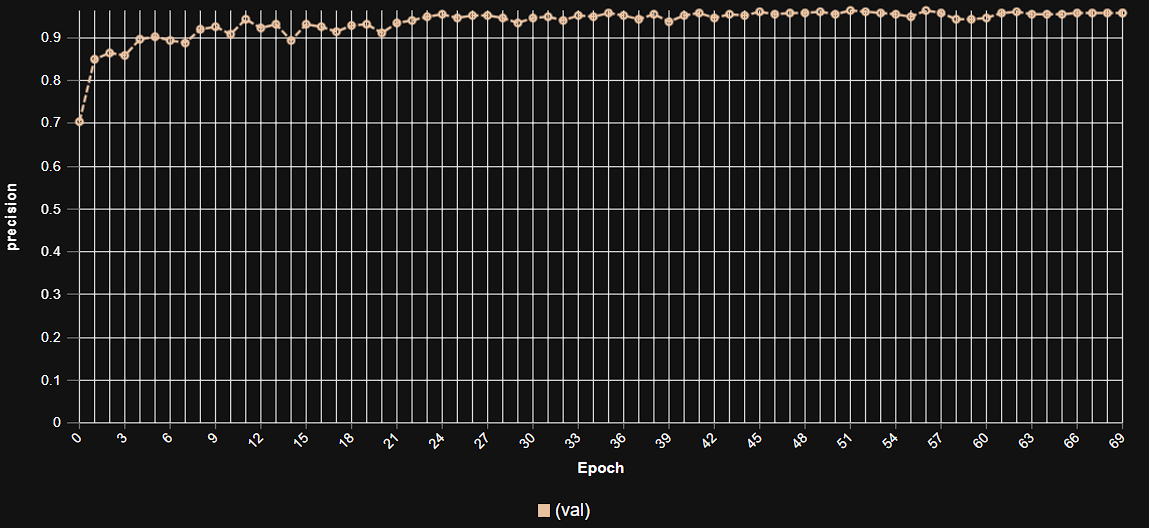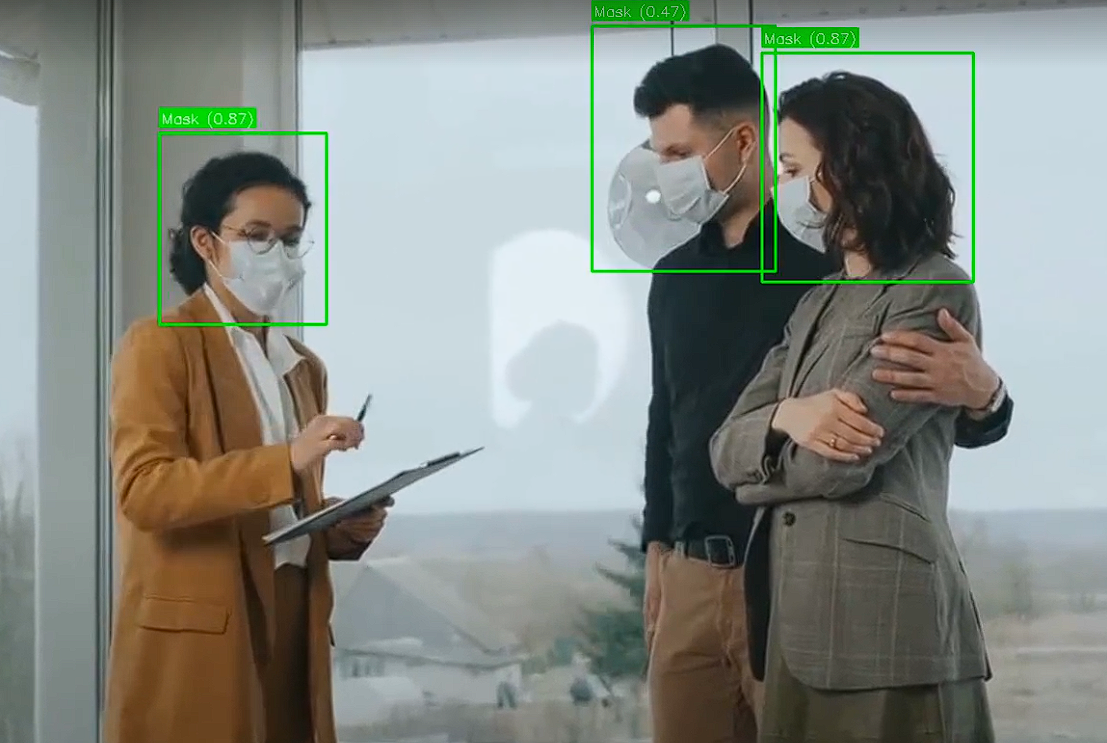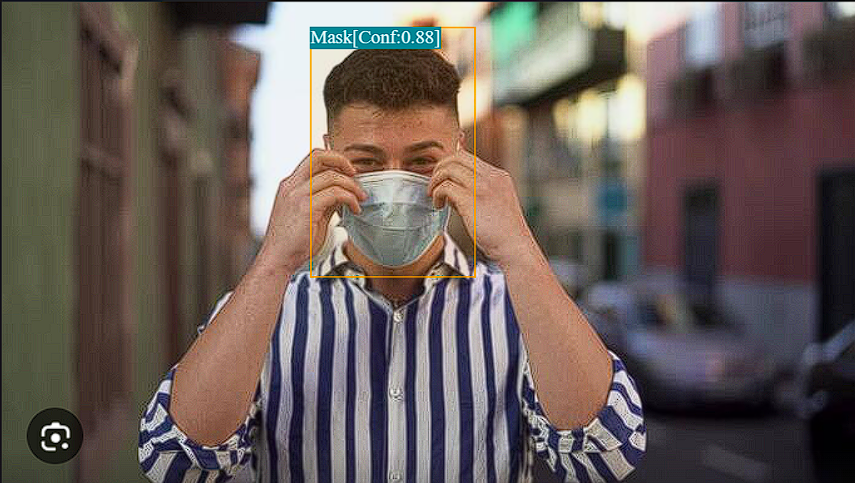Public Health Vigilance: AI-Powered Mask Wearing Detection for Crowd Monitoring
Introduction
In recent years, the importance of public health measures, such as mask-wearing, has been underscored by global health crises. Monitoring compliance with such guidelines in large public spaces, however, presents an enormous challenge for traditional methods. Manual observation is impractical, inconsistent, and cannot provide real-time, comprehensive data across vast areas or dense crowds. This limitation impacts public health interventions, resource allocation, and the overall safety management of public venues.
Artificial Intelligence, particularly through advanced computer vision and real-time object detection techniques, offers a scalable and precise solution to this critical public health need. By enabling automated, continuous monitoring and classification of mask-wearing status in crowd environments, AI-powered systems promise to enhance public health compliance, streamline safety operations, and provide invaluable data for policy-making. This blog post explores our cutting-edge AI model designed for robust mask wearing detection in crowd monitoring, highlighting its technical capabilities, profound public health benefits, diverse applications, and the significant impact it promises for smarter, safer public spaces.
1. The Critical Need for Automated Mask Wearing Detection in Crowds
The urgency for efficient and accurate mask wearing detection stems from several critical factors, directly impacting public health, operational safety, and societal resilience:
Public Health Compliance and Disease Control: In contexts requiring mask mandates, automated detection provides real-time insights into compliance rates, enabling targeted interventions and contributing to the control of airborne disease transmission in high-density areas.
Enhancing Safety in Public Spaces: Understanding compliance levels in venues like airports, transit hubs, or event centers supports overall public safety protocols and risk management during public health emergencies.
Optimizing Resource Allocation: Manual monitoring is resource-intensive and subjective. AI automates this process, allowing security or public health personnel to be deployed more strategically for direct interaction or other critical tasks.
Data-Driven Policy Making: Aggregated, objective data on mask-wearing patterns and compliance trends can inform public health authorities, helping them evaluate policy effectiveness and make adaptive, data-driven decisions.
Reducing Human Friction: Automated systems reduce the need for direct, often confrontational, human enforcement in high-volume areas, promoting a more efficient and less intrusive approach to compliance monitoring.
By addressing these multifaceted challenges, AI-powered mask wearing detection is not merely a technological advancement; it’s a fundamental shift towards more intelligent, data-driven, and scalable public health management in a dynamic world.
2. Benefits of AI in Mask Wearing Detection for Crowd Monitoring
AI-powered systems for mask wearing detection offer a multitude of transformative benefits that are reshaping public health and safety protocols:
Real-Time Compliance Monitoring: AI algorithms analyze live video feeds instantaneously, classifying the mask-wearing status of individuals in a crowd (masked or unmasked). This provides immediate, actionable data for public health officials or venue managers.
Enhanced Accuracy and Consistency: Trained on vast datasets encompassing diverse mask types, facial features, lighting, and crowd densities, AI models provide highly consistent and accurate classifications, reducing subjective human interpretation.
Scalability for Large Public Spaces: AI can simultaneously monitor thousands of individuals across numerous camera feeds, making it feasible to track compliance in large venues like airports, stadiums, shopping malls, or public transport systems.
Objective Data for Analysis: The system generates objective, quantifiable data on compliance rates over time, across different locations, and during various events. This valuable data supports epidemiological studies and policy evaluation.
Resource Optimization: Automating the monitoring process frees up human resources, allowing security personnel or public health officials to focus on higher-value tasks, such as direct assistance or managing critical incidents.
Non-Intrusive Monitoring: The system operates passively from surveillance feeds, providing compliance insights without directly interacting with or inconveniencing individuals in the crowd.
3. Data Preparation for Robust AI
The success of our mask wearing detection model is directly attributable to the meticulous preparation of a diverse and high-quality dataset. This process involved collecting and annotating vast quantities of crowd imagery, encompassing a wide range of scenarios, mask types, and human variations. Key aspects of our data preparation strategy included:
Diverse Crowd Densities: The dataset included images ranging from sparse groups to very dense crowds, training the model to detect individuals and their mask status effectively even in highly occluded environments.
Variety of Mask Types: Images featured different types of masks (e.g., surgical masks, N95 respirators, cloth masks) and colors, ensuring the model’s ability to recognize various forms of facial coverings.
Diverse Facial Features and Demographics: The dataset encompassed individuals with various facial features, skin tones, and demographic backgrounds to ensure equitable and robust detection performance.
Varying Angles, Lighting, and Environmental Conditions: Data was collected from multiple camera angles, under diverse lighting (daylight, low light, shadows), and in various environmental conditions (indoor, outdoor, different weather) to enhance real-world applicability.
Partial Occlusions and Complex Backgrounds: Images included scenarios where individuals or their faces were partially occluded by other people, objects, or environmental elements, challenging the model to infer mask status from limited visual cues.
Precise Annotation: Expert annotators meticulously drew bounding boxes around each individual and classified their mask-wearing status (e.g., “masked,” “unmasked,” “improperly worn”), providing accurate ground truth for training.
Model Architecture
The foundation of our advanced mask wearing detection system is the YOLOv9m architecture. YOLO (You Only Look Once) is a leading real-time object detection model renowned for its speed and efficiency, making it an ideal choice for continuous monitoring of dynamic crowd environments. The YOLOv9m variant provides an optimal balance between high detection accuracy and rapid inference speed, which is crucial for delivering real-time compliance insights.
Key advantages of YOLOv9m in the context of mask wearing detection in crowds include:
Real-Time Multi-Person Detection: YOLOv9m’s highly optimized design allows for extremely fast analysis of live video streams, enabling near-instantaneous detection of multiple individuals within a dense crowd.
Accurate Mask Status Classification: The model can precisely classify the mask-wearing status of each detected individual (e.g., “masked,” “unmasked,” “improperly worn”), even with partial facial visibility.
Robustness to Crowded Scenes: Its sophisticated deep learning layers are highly effective at distinguishing individuals and their mask status in challenging crowd scenarios, including occlusions and varying distances from the camera.
Efficient Processing for Large-Scale Deployment: YOLOv9m can process numerous individuals within the same frame, providing comprehensive compliance data across vast public spaces with minimal computational resources.
Training Parameters
The model underwent extensive training to optimize its performance across the diverse dataset. The key training parameters were carefully selected to ensure stability, rapid convergence, and robust generalization to new, unseen crowd monitoring scenarios:
Parameter |
Value |
Description |
|---|---|---|
Base Model |
YOLOv9m |
The foundational deep learning architecture employed for the task, known for its efficiency and accuracy in real-time object detection. |
Batch Size |
8 |
Number of samples processed before the model’s internal parameters are updated, balancing training stability and computational efficiency. |
Learning Rate |
0.0005 |
Controls the step size during the optimization process, a conservative rate chosen for stable convergence and fine-tuning. |
Epochs |
70 |
Number of complete passes through the entire training dataset, ensuring the model learns extensively from the data and generalizes well. |
Optimizer |
AdamW |
An adaptive learning rate optimization algorithm (Adam with decoupled weight decay) known for its efficiency and strong performance in deep learning tasks. |
Inference Time |
~0.35s |
The average time taken for the trained model to process a single video frame and output mask wearing detection results. |
Model Evaluation
Our rigorous training and validation processes have yielded a model with robust capabilities for mask wearing detection in crowd monitoring. The evaluation metrics below demonstrate the model’s high precision, strong recall, and overall detection accuracy, proving its reliability for critical public health and safety applications.
Metric |
Overall Performance |
Masked Individuals |
Unmasked Individuals |
|---|---|---|---|
Precision |
0.96 |
0.95 |
0.97 |
Recall |
0.90 |
0.93 |
0.88 |
F1 Score |
0.93 |
0.94 |
0.92 |
mAP |
0.95 |
0.94 |
0.96 |
mAP@50-95 |
0.73 |
0.75 |
0.72 |
Inference Time |
~0.35s |
- |
- |
Precision (0.96 Overall): This exceptionally high precision indicates that when our model identifies an individual’s mask status, it is correct 96% of the time, minimizing false alerts and ensuring reliable compliance monitoring.
Recall (0.90 Overall): With a strong recall of 90%, the model successfully identifies most individuals and their correct mask status within a crowd. This is crucial for comprehensive monitoring and ensuring high compliance rates are accurately captured.
F1 Score (0.93 Overall): The F1 Score, a harmonic mean of precision and recall, provides a balanced measure of the model’s overall accuracy, reflecting its robust performance in identifying and correctly classifying mask wearing status in crowded scenes.
Mean Average Precision (mAP) (0.95 Overall): As a comprehensive metric for object detection, mAP of 0.95 signifies outstanding overall performance, indicating high accuracy in locating individuals and classifying their mask status at standard detection thresholds.
mAP@50-95 (0.73 Overall): This metric confirms the model’s ability to maintain good performance even at stricter Intersection over Union (IoU) thresholds, demonstrating precise localization of individuals in dense crowd environments.
Inference Time (~0.35s): The sub-second inference time ensures that mask wearing detection can be generated almost instantaneously, making the system highly practical for real-time crowd monitoring and live alert systems.
The per-category metrics highlight the model’s optimized performance: “Masked Individuals” show high recall, effectively identifying compliant individuals, while “Unmasked Individuals” also maintain strong precision and recall, ensuring accurate identification of non-compliant persons.
Epoch vs. Precision during Training
To demonstrate the training dynamics and performance stability of our model, the following graph illustrates the progression of precision over epochs. This visualization highlights how the model refined its accuracy during the training process, converging to its optimal performance.
 This graph illustrates the increase in model precision as training progresses over multiple epochs, showcasing the stable learning curve and high precision achieved by the YOLOv9m architecture in mask wearing detection within crowd monitoring scenarios.
This graph illustrates the increase in model precision as training progresses over multiple epochs, showcasing the stable learning curve and high precision achieved by the YOLOv9m architecture in mask wearing detection within crowd monitoring scenarios.
Model Inference Examples
Below are conceptual examples demonstrating the model’s output when analyzing crowd images for mask wearing detection. The AI accurately identifies individuals and classifies their mask status, providing immediate visual insights for compliance monitoring.
Example 1: Real-time Mask Detection in a Public Area
 This image showcases our AI model in action, accurately identifying individuals in a crowd and classifying their mask-wearing status (e.g., highlighting masked individuals in green and unmasked in red), providing clear visual cues for compliance monitoring.
This image showcases our AI model in action, accurately identifying individuals in a crowd and classifying their mask-wearing status (e.g., highlighting masked individuals in green and unmasked in red), providing clear visual cues for compliance monitoring.
Example 2: Monitoring Mask Compliance in a Densely Populated Space
 This example demonstrates the model’s capability to effectively detect mask-wearing status even in densely populated areas with occlusions, highlighting its robustness for large-scale crowd monitoring.
This example demonstrates the model’s capability to effectively detect mask-wearing status even in densely populated areas with occlusions, highlighting its robustness for large-scale crowd monitoring.
4. Real-World Applications and Societal Impact
The deployment of this AI-powered mask wearing detection system is poised to create a profound impact across various public health, safety, and operational sectors:
Public Transport Hubs: Monitors compliance in train stations, airports, and bus terminals to enhance safety and enforce health protocols.
Retail and Commercial Centers: Provides real-time insights into mask compliance within shopping malls, supermarkets, and stores, supporting safer environments for customers and staff.
Educational Institutions: Helps maintain health protocols in schools and universities by monitoring mask compliance in common areas and classrooms.
Event Venues and Stadiums: Enables large-scale monitoring of mask-wearing during concerts, sports events, and gatherings, facilitating crowd management and public health adherence.
Smart City Initiatives: Integrates with broader smart city platforms to provide data on public health compliance trends, aiding urban planning and emergency response.
Occupancy Management: Can be combined with crowd counting capabilities to manage occupancy levels and ensure health guidelines are met in various facilities.
5. Future Directions in AI-Powered Mask Wearing Detection
Our commitment to innovation ensures continuous development and enhancement of our AI capabilities in crowd monitoring for public health. Future efforts will focus on:
Integration with Behavioral Analytics: Combining mask detection with other AI capabilities like social distancing monitoring, crowd density estimation, and anomaly detection for a comprehensive public health surveillance system.
Privacy-Preserving AI: Developing advanced techniques to ensure privacy, such as real-time anonymization or aggregation of data, when monitoring mask compliance in public spaces.
Multi-Camera Fusion and 3D Tracking: Enhancing robustness by fusing data from multiple cameras for improved individual tracking and compliance assessment in complex, multi-view environments.
Real-time Alert Systems: Developing sophisticated alert systems that can notify relevant personnel (e.g., security, health officers) when non-compliance thresholds are met in specific areas.
Adaptive Policy Response: Utilizing real-time compliance data to inform dynamic public health policy adjustments, enabling more agile and effective responses to evolving situations.
Conclusion
AI-powered mask wearing detection represents a critical advancement in public health technology. By delivering unparalleled accuracy, efficiency, and real-time insights into compliance, our solution empowers public health authorities, venue managers, and organizations to create safer, more resilient environments for everyone. As we continue to refine and expand these capabilities, the future promises an even more intelligent, data-driven, and proactive approach to public health vigilance in an interconnected world.